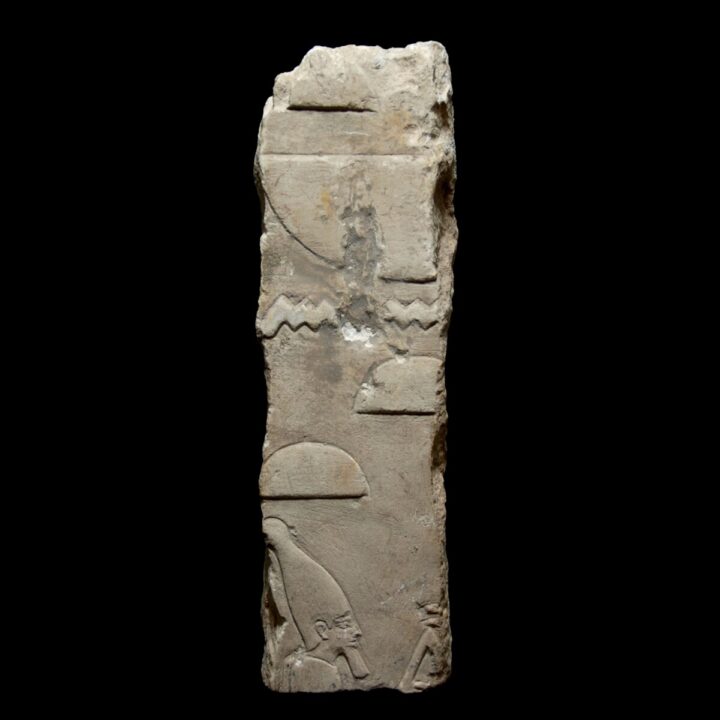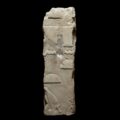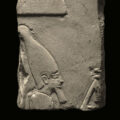Limestone Relief with the Head of a Pharaoh
Culture: Egyptian
Period: New Kingdom, 19th dynasty, 1292-1186 B.C.
Material: Limestone
Dimensions: 25 cm high
Price: 10 000 Euro
Ref: 1510
Provenance: US private collection Donald Wonder (1938-2023), acquired prior to 1998. With a copy of the inventory register listing this relief under number 36.
Condition: Unrestored
Description: Finely worked out limestone relief depicting on the lower part the head of a pharaoh with a false beard and the white crown of the south (“hedjet”). He holds a frail in front of him. In the upper part traces of hieroglyphs are preserved, which stand for the phrase “Master of…”. The complete inscription possibly reads “Master of the Set animal” and refers to god Set who was elevated by the Ramessides to be their dynasty god. The god was on the one hand a symbol for chaos, but especially in the New Kingdom also more powerful and for the enemies a terrifying tutelary god. It shows by their names how important Set was to the Ramesside rulers, such as Setos (“Man of Set”) or Setnacht (“Seth is powerful”). Under Ramses II the adoration of Set finally reached its peak. He had a temple built in the south of the city of Pi-Ramesse, which was in no way inferior to that of Amun in the north. Ramesses II even went so far as to regard himself as god Set, or to refer to himself as his son, as recorded in an inscription at Abu Simbel. Whether the pharaoh on this relief can be identified as Ramses II (“The Great”) is speculative, but certainly possible. Mounted.





